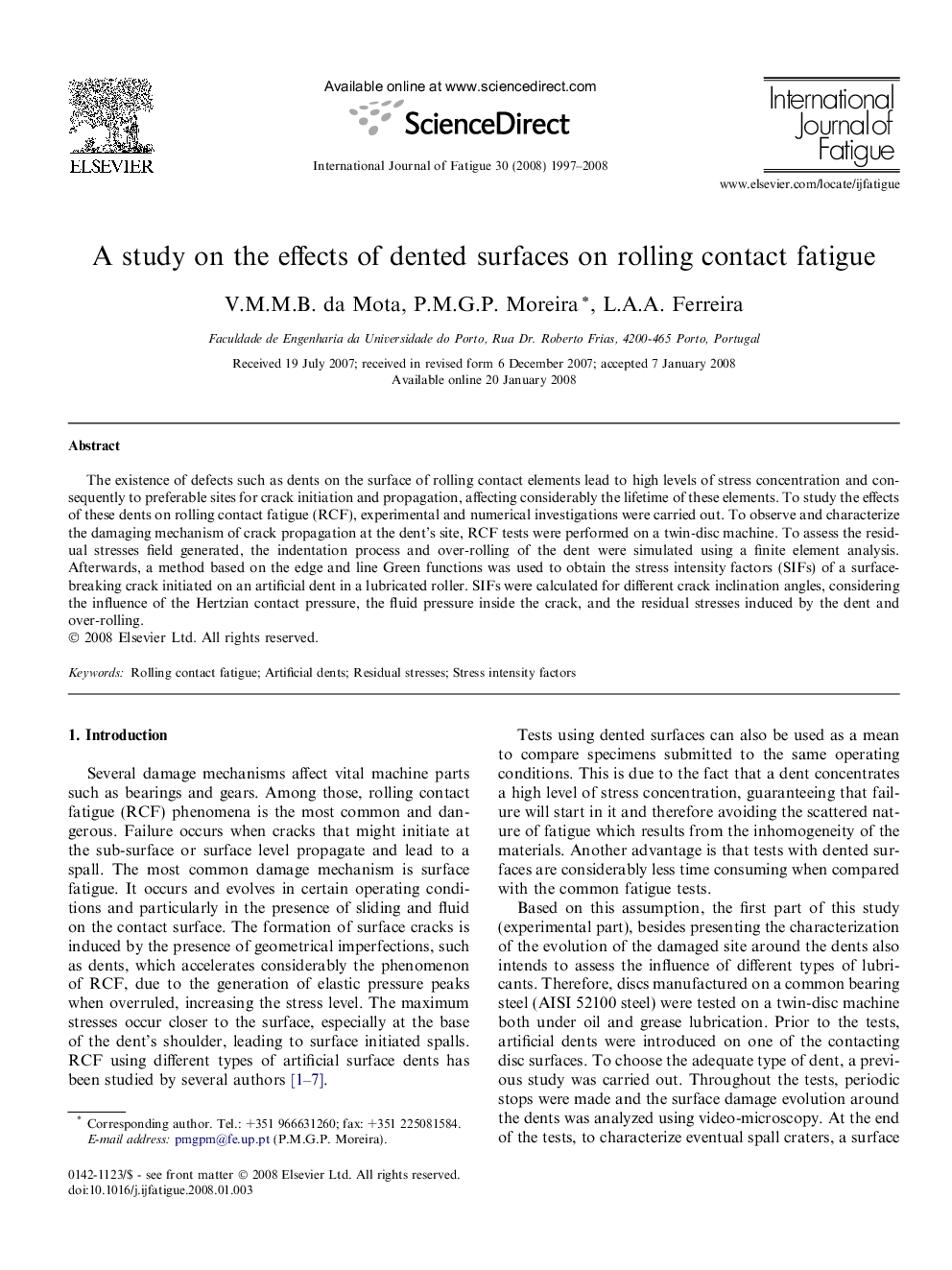| کد مقاله | کد نشریه | سال انتشار | مقاله انگلیسی | نسخه تمام متن |
|---|---|---|---|---|
| 781647 | 1463834 | 2008 | 12 صفحه PDF | دانلود رایگان |

The existence of defects such as dents on the surface of rolling contact elements lead to high levels of stress concentration and consequently to preferable sites for crack initiation and propagation, affecting considerably the lifetime of these elements. To study the effects of these dents on rolling contact fatigue (RCF), experimental and numerical investigations were carried out. To observe and characterize the damaging mechanism of crack propagation at the dent’s site, RCF tests were performed on a twin-disc machine. To assess the residual stresses field generated, the indentation process and over-rolling of the dent were simulated using a finite element analysis. Afterwards, a method based on the edge and line Green functions was used to obtain the stress intensity factors (SIFs) of a surface-breaking crack initiated on an artificial dent in a lubricated roller. SIFs were calculated for different crack inclination angles, considering the influence of the Hertzian contact pressure, the fluid pressure inside the crack, and the residual stresses induced by the dent and over-rolling.
Journal: International Journal of Fatigue - Volume 30, Issues 10–11, October–November 2008, Pages 1997–2008